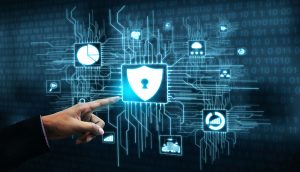
The move to cloud computing in government has changed from a focus on Cloud First to Cloud Smart. The initial push to cloud encouraged agencies to look at cloud options when adding or updating technology but provided no direct guidance. This "Cloud First" push provided a way to educate agencies on what cloud is and why it is a viable option for deploying applications to the government workforce. This education worked, making even the most security-conscious agencies comfortable with moving data and applications to the cloud to gain new efficiencies in time and budget.
The Cloud Smart policy, a logical evolution of Cloud First, was introduced last year and provides more guidance surrounding security, procurement, and workforce skills to foster cloud adoption and implementation. While the value cloud can provide is widely accepted, procurement of cloud remains a stumbling block to wider, easier cloud adoption. The shift in spending from capital funds to operating funds and the fluidity of the fees based on need and usage require different language and structure in contracts. Security also continues to be a focus, creating new "shared responsibility" language in cloud agreements and plans.
To help you get smarter on how to be cloud smart, we've compiled a list of upcoming events that cover the areas related to a successful cloud deployment.


 In October, ghosts and goblins come to life as decorations on front lawns and as candy-seeking children knocking on our doors. But stepping away from the frivolity of Halloween, October has also become a time for us to reflect on the real threats we face year-round when it comes to our data, identity privacy and online security.
In October, ghosts and goblins come to life as decorations on front lawns and as candy-seeking children knocking on our doors. But stepping away from the frivolity of Halloween, October has also become a time for us to reflect on the real threats we face year-round when it comes to our data, identity privacy and online security. In place since 2014, the Federal Information Technology Acquisition Reform Act (FITARA) has aimed to provide guidance and checkpoints for agencies' modernization efforts. Over the years, the compliance status of the agencies has had its
In place since 2014, the Federal Information Technology Acquisition Reform Act (FITARA) has aimed to provide guidance and checkpoints for agencies' modernization efforts. Over the years, the compliance status of the agencies has had its  The
The 

